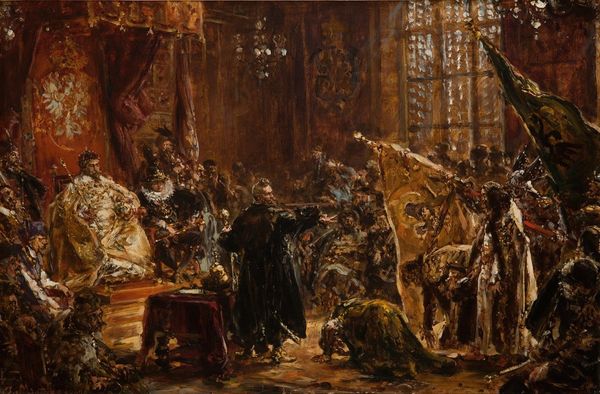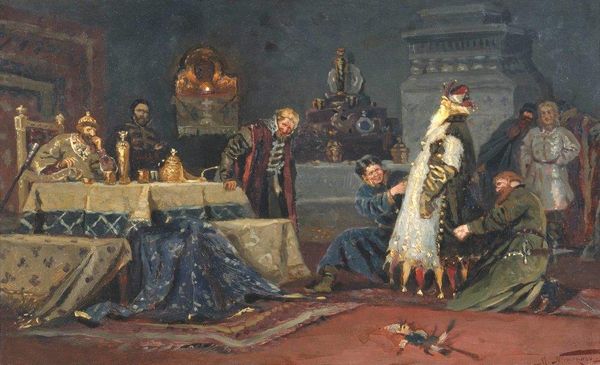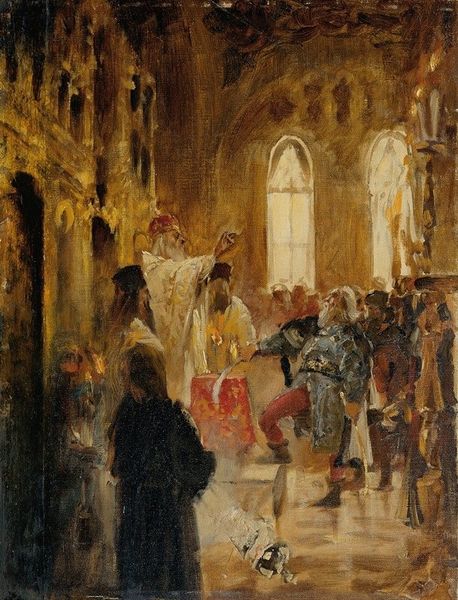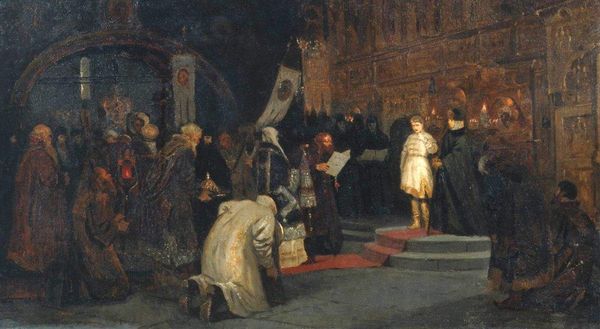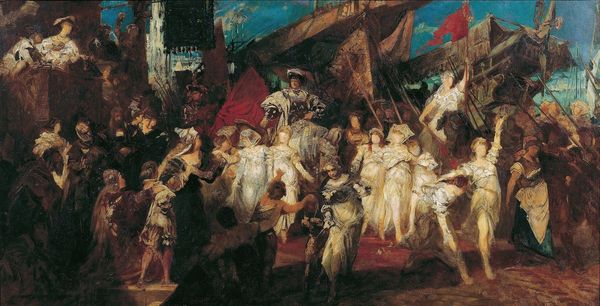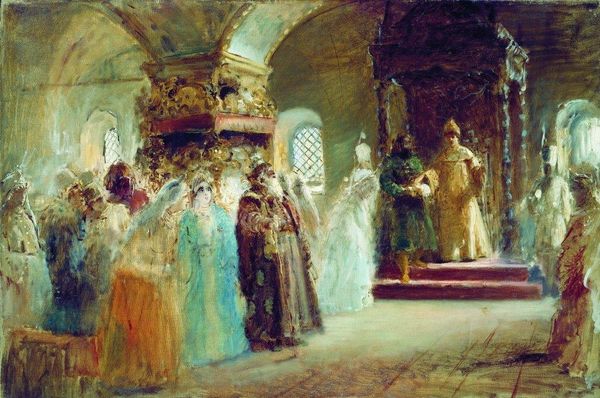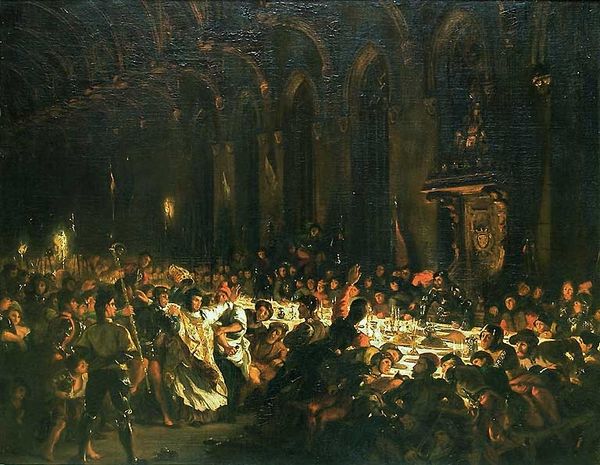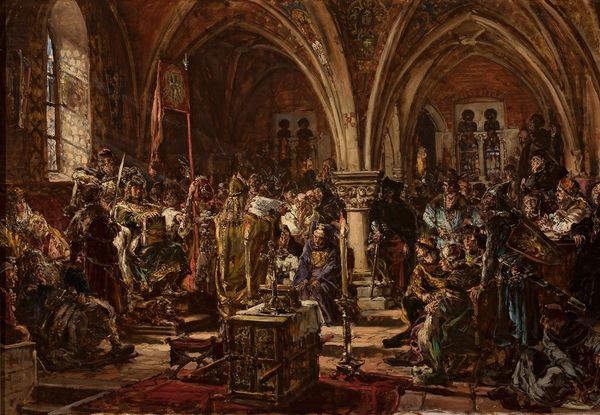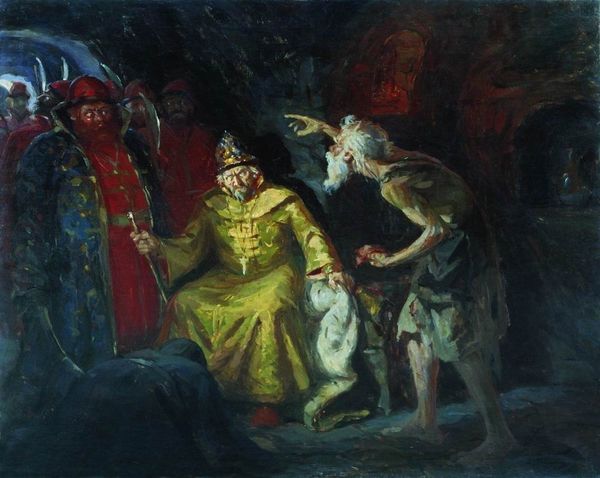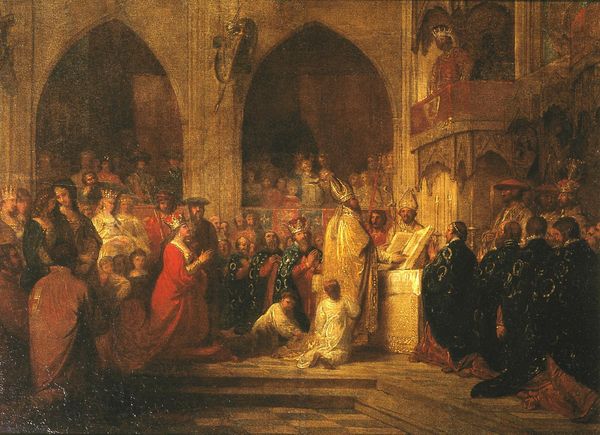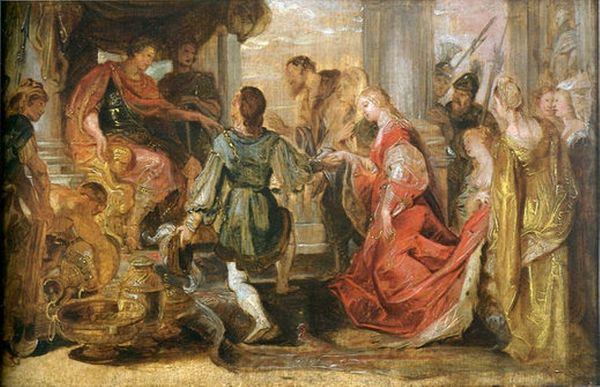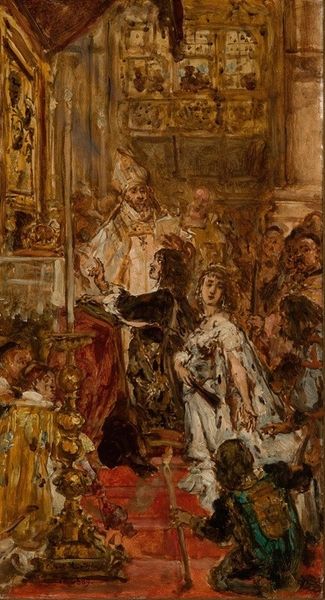
Dimensions: 12.5 x 18.5 cm
Copyright: Public domain
Curator: This compelling piece is "Exit of Patriarch Hermogenes," painted in 1881 by Ilya Repin. Currently housed in the Tretyakov Gallery in Moscow, this oil painting captures a scene steeped in historical significance. Editor: My immediate impression is one of dense materiality. The brushstrokes seem hurried, almost violent, adding a turbulent emotional depth. Curator: Indeed. The formal structure utilizes a limited palette, dominated by the deep blacks and browns that serve to heighten the impact of the yellows, blues, and reds present. Consider how Repin uses light; it’s almost theatrical. Editor: Precisely. It emphasizes labor and craft. Notice the red carpet—ostensibly luxurious, but the roughly rendered quality undercuts any sense of opulence. I’m compelled to ask what grade of oil pigment was used and under what labour conditions the canvas and pigments were produced, prepared, and traded? Curator: A crucial element is the composition itself. The tight framing focuses our attention on the figures processing from what we assume is some enclosed building interior toward an implied exterior darkness. Editor: Agreed, and further contextualized within Repin's broader social realism, one can feel the palpable tension born from a fraught historical narrative, steeped in notions of class division and material hardship, even as he depicts a seemingly gilded religious procession. The sheer weight and source of that gold on those garments—its history of colonialization, extraction, and consumption—presses on my analysis. Curator: And that symbolic tension becomes realized by Repin's rendering the robes of Hermogenes. This is an allegorical representation, a convergence of spiritual authority versus impending worldly consequences. Editor: Yes, even down to Repin’s brush handling. Notice how the application becomes nearly frenzied in representing the mass of spectators, and how it hints at anxieties toward both the role of the church and toward entrenched power dynamics. This resonates powerfully within any interpretation, both for its original viewers and those who view this painting today. Curator: Indeed. A striking and rather affecting synthesis. Editor: An encapsulation of its time, manifested through pigment.
Comments
No comments
Be the first to comment and join the conversation on the ultimate creative platform.
